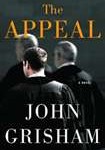Thoughts on Yeager: Role of Appellate Judges, Special Verdict Forms, and the Significance of a Hung Jury
 Last week, in Yeager v. United States, the Supreme Court resolved a longstanding tension between two aspects of Double Jeopardy law: the collateral estoppel doctrine, which precludes relitigation of issues previously found in the defendant’s favor, and the hung jury rule, which permits relitigation of charges as to which a jury cannot reach agreement.
Last week, in Yeager v. United States, the Supreme Court resolved a longstanding tension between two aspects of Double Jeopardy law: the collateral estoppel doctrine, which precludes relitigation of issues previously found in the defendant’s favor, and the hung jury rule, which permits relitigation of charges as to which a jury cannot reach agreement.
Yeager, an Enron employee, was charged with multiple counts of fraud and insider trading. The counts were factually linked: Yeager’s alleged fraud was that he knowingly participated in making false statements to investors regarding the performance of a new Enron project, while his alleged insider information was his knowledge that the project was not actually going so well. At trial, the jury acquitted Yeager of fraud, but hung on insider trading. A long line of Supreme Court cases permits retrial when the jury hangs, and the government indeed sought to take advantage of this Double Jeopardy exception by recharging Yeager with insider trading.
Yeager nonetheless presented a Double Jeopardy defense, invoking the collateral estoppel rule of Ashe v. Swenson. In Yeager’s view, the first jury necessarily determined that the government failed to prove he knew the falsity of the statements made to investors. If he did not know about the gap between what investors were told and the actual state of affairs, then the government’s insider trading theory would collapse. In the government’s view, however, the first jury might have acquitted instead based on doubt about whether Yeager actually participated in making the false statements; uncertainty about what the jury actually decided in its acquittal would preclude application of Ashe. The district court agreed with the government’s view, but the Fifth Circuit reversed. The Supreme Court then affirmed, holding that application of the collateral estoppel doctrine was not affected by the seeming inconsistency in the jury’s treatment of the fraud and insider trading counts.
Besides its holding, three aspects of Yeager strike me as worthy of note.

 In a comment following Ed Fallone’s post on Chief Justice Robert’s little list (actually it as a rather long list), he argues that there is little in the text, structure and history of the Bill of Rights that might inform the question of when the due process clause requires a judge to recuse herself because of the potential for bias associated with campaign contributions:
In a comment following Ed Fallone’s post on Chief Justice Robert’s little list (actually it as a rather long list), he argues that there is little in the text, structure and history of the Bill of Rights that might inform the question of when the due process clause requires a judge to recuse herself because of the potential for bias associated with campaign contributions: The Supreme Court ruled yesterday in Caperton v. A.T. Massey Coal Company that the Due Process Clause of the United States Constitution is violated by the refusal of a judge to recuse herself when the disproportionate campaign contributions of a litigant on behalf of that judge create a serious, objective risk of actual bias.
The Supreme Court ruled yesterday in Caperton v. A.T. Massey Coal Company that the Due Process Clause of the United States Constitution is violated by the refusal of a judge to recuse herself when the disproportionate campaign contributions of a litigant on behalf of that judge create a serious, objective risk of actual bias.